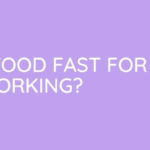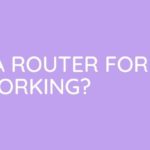When you think about agriculture, you may wonder about soil and hydroponics. Except for tall and big trees, plants need only water and nutrients for growth. It’s the gardener who chooses what should be the planting medium. It can either be soil or water. So, which one is better? What are the prerequisites? Let’s make a comparison of both.
Contents
Our Verdict
If you are not planning to grow big plants, then hydroponics is the best solution. It needs less space, nutrients, and productivity are relatively high. But on the downside, it is also costly and maintenance heavy.
Soil Vs Hydroponics: Comparison Chart
Comparing soil and hydroponics is not about the techniques. It also considers the suitable species of plants that can be grown—profit returns, space, input cost, effort, pest control, productivity, among many.
| Specification | Soil Farming | Hydroponics |
|---|---|---|
| Cost | Very inexpensive | Expensive at the start. |
| Maintenance needed | Monitoring pH, watering, making sure to not over- or under-watered | Little maintenance after the 1st setup |
| Speed of plant growth | Normal | Faster |
| Flavor quality | Draw | Draw |
| Productivity | Average | Better |
| Output per unit area | Standard | Increase output |
| Denser farming | Not possible | Possible |
| Labour required | Requires less labor with the necessary automation | Labour intensive |
| Nutrient and water required | High | Low |
Soil Vs Hydroponics: Differences
1. Cost
The significant difference between soil farming and hydroponics is the cost factor. It is always easy to find a piece of land that is suitable for agriculture. You can set up start planting fast. The input required into a virgin soil may be higher than usual. But it is cost-effective considering the input and the profit.
In the case of hydroponics, it is harder to set up. You will need a deep pocket if you are planning to do it on a big scale. Setting up is costly. You will need many reservoirs for holding water. Also, you may need an automated system for water and nutrient distribution. It is also labor-intensive, adding to the cost. But once you set up, the operating cost is relatively low. Water and nutrient requirements are low, and you get better productivity.
2. Plant Growth And Productivity
Plants grow faster when they have the best growth conditions. Such conditions also improve their productivity. When a plant has the best conditions, it needs, the growth rate and productivity improve. Bigger leaves, better fruits, better stem structure are all improvements. This helps to increase the value.
In soil farming, plants are often exposed to various pathogens. The soil itself has millions of microorganisms in it. They may be friendly or not. If you are planting outside, then plants may face adverse weather, insects among many. This reduces primary productivity. The roots have to find a nutrient and water pocket, leading to a reduced growth rate. This is due to the increased time required for the establishment of the plant.
3. High-Intensity Farming
With hydroponics, you can do high-intensity farming. The nutrients reach the plant roots, and they can absorb them with ease. This delimits the need for sophisticated root development. Also, every plant in the area will get all the nutrients it needs. Again, you can do denser farming as competition for resources is non-existent. This improves the yield per unit area.
Soil farming does not support high-intensity farming. The plants need adequate time for root development. Also, the soil nutrients may get depleted after each harvest. Soil needs proper treatment after each harvest. Else, will lead to severe soil erosion and land degradation. The nutrient and water required for soil farming are high. Also, the presence of weeds and other unwanted plants makes it less efficient. You can’t place the plants close to each other as it will increase competition for resources. Competition decreases productivity and yield.
4. Maintenance
The hydroponics system needs maintenance at a regular interval. You have to check for pH, nutrient concentration, water levels, and algae formation. You can also automate the system to check the pH and nutrient concentration.
Soil farming is more maintenance-heavy than hydroponics. You have to ensure proper soil conditions, watering, and fertilizer content. Also, adequate weed removal and pest control is a must.
5. Yield
Both agricultural methods give excellent yields. But hydroponics gives better yield per unit area. This is thanks to denser farming and better management. Also, competition for resources is not present. This improves plant establishment and growth. Soil farming produces standard yields. But it is susceptible to pests and diseases. This can be detrimental.
The area usage in hydroponics is far greater than soil farming. You can use place the plants in stacks or vertical columns, which improves space usage. In the case of vertical farming, the plants are grown in stacks. Consider a system of 5 stacks, five times the average production in a soil farming system. This improves the yield per unite area.
Soil Vs Hydroponics: Similarities
1. Flavour Profile
There have been many claims that hydroponics alters flavor profile. These are absurd claims. Yes, the plants acquire various adaptations to survive. These adaptations may or may not change the secondary metabolite concentration. Some people claim this as the reason for the flavor change. But this has not been proven scientifically.
Plants grown in the best conditions in soil and hydroponics have a similar flavor profile. Often hydroponics has an advantage as the plants produced have better vegetative content.
Soil Vs Hydroponics: Overview
Overview Of Soil Agriculture
The soil has been in use over centuries for farming. Soil is a perfect supporting medium for the plant. It has all the nutrient elements for the plants to survive. Or you can add all the required elements into the soil. The soil can bind together the nutrients a plant may need to survive. It also acts as a sink of various microorganisms, which helps the plants to thrive.
Soil also provides the capillary water, which is the best source for absorption by plants. Soil farming means planting crops in the soil. You have to add adequate fertilizers and water if the soil doesn’t have those. Most of the time finding perfect soil or conditions is almost impossible. This reduces the possible fertile areas in the world. But you can always put in the effort and tame the soil and make it a fertile land. Adding water and organic fertilizers at regular intervals will increase productivity. This will also improve soil texture and character.
In the case of soil farming, you can either do it in a greenhouse or outside. The greenhouse often limits the size of the plant that you can grow. There are exceptions, though. There are industrial production centers where bigger crops are grown. You can also plant outside a greenhouse. This keeps the plants exposed to natural elements and pests. Plants that were developed in their natural habitat often have the best quality.
The disadvantages of soil farming include excessive land usage and soil erosion, among many. Also are the possible changes in the environment and loss of soil quality and texture. Continuous and extensive farming can degrade the soil and cause soil erosion. Fertile lands are often produced by burning the existing forest, which hurts the environment.
Slash and burn agriculture is a dangerous practice. It reduces the forest cover also increases the possibility of landslides. At the same time, the conversion of arid land into fertile one may become difficult. Often it is time-consuming and labor-intensive. Also, the plants are always exposed to the natural elements. Global warming and a shift in climatic conditions will increase the difficulty. The changing climate also reduces yield, thus reducing profit.
- Cost-effective
- Less labor needed with automation
- Often best products are produced in their natural environments
- Large scale production
- Soil provides most of the resources
- Plants with better resistance to diseases
- High levels of automation are possible
- Landslides associated with the slash and burn agriculture
- Loss of soil texture and quality over time
- Climate change affects yield
- Yield per unit area is low
- Constant care and maintenance required
- High-density farming is not possible
Overview Of Hydroponics
In a hydroponics system, water is the main component. It is the sole source of nutrients, water, and aeration to the roots. The nutrients needed for the plant is calculated and mixed. It is then added to the water and circulated through the system. The distribution system can either be manually operated or automated.
In hydroponics, the plants are grown on an artificial support medium. The nutrients for the plant growth and water are mixed and given to the plant. Rocks, soil, coconut fibers, and a special type of sponge can support medium. The material used depends upon availability, reusability, and economic feasibility. If you are a small-scale farmer or a novice, one better use soil or rocks as a supporting medium.
The advantages of hydroponics include high-density farming, better yield, and cost-effectiveness. Also, the water need is only a fraction of that of soil farming. The water in the system gets circulated over and over again. This reduces the amount of water used in the system. Hydroponics also offers you cleaner farming in which you can harvest the crops earlier. Also, you can create the exact pH and mineral need for the plants.
This helps to create the best growth conditions for the plant. It also helps to save a lot of space, reduces surface runoff and soil erosion. Hydroponics gives you more yield per unit area. If you are considering vertical farming, then that yield can increase further. Often vertical farming gives 4 to 5 times the standard yield. This is due to the optimization of space used. This will also help to improve productivity without needing more land. A future proof solution to feed the needy. But it does come with many disadvantages.
The initial set up cost is quite high. You need specialized equipment controlling the mixing and distribution of nutrients and water. Also, you will need a greenhouse or a controlled environment. Plants grown in hydroponics are more susceptible to pathogens. A plant growing in its best conditions is often less resistant to diseases. Also, you have to ensure regular maintenance as algae formation is possible. Also, system failure is an issue. For a small-scale operator, these issues will not be that great. It is also a labor-intensive process. The plants often need repotting as they become more significant. This adds to the cost.
- High-density farming
- Improved yield
- Climate change does not affect plant growth
- No competition for resources among the plants
- High-density farming is possible
- Better control over growth conditions
- The increased growth rate of the plant
- Increased biomass production per unit area
- Less susceptible to pests
- Better quality control
- Vertical farming improves yield per area by many times
- Setting up cost is high
- Regular maintenance is a must
- Large scale productions are rare
- Regular repotting needed to ensure better growth
FAQs
1. For a small-scale kitchen garden, which is best?
If you are not limited by space, then soil farming is best. Even if you don’t have much space planting the crops in pots will save a lot of space and money.
2. Is large scale lettuce production a good idea for hydroponics?
Yes, it is. Hydroponics will improve the yield per unit area, thus improving the profit.
3. What is slash and burn agriculture?
Slash and burn agriculture is an old method that is still followed in various parts of the world. It is required to cut down and burn a part of the forest or marshland and use them for agriculture.
4. What are the demerits of synthetic/chemical fertilizers?
They are non-biodegradable. They also destroy soil texture and fertility.
5. Will global warming affect crop production?
Yes, it will. Changing the global climate will hurt crop production.
6. What are micro and macronutrients?
Micro and macronutrients are two classes of nutrients that a plant needs. A plant needs macronutrients in higher quantities. Some of those macronutrients are nitrogen, carbo, potassium, etc.
Final Talk
Both soil farming and hydroponics are great options for farming. Both provide you an opportunity to study and understand a plant. It also helps you to understand nature better as it is.
For a novice farmer or a person that has a space restriction, hydroponics is the right choice. If you want to improve your yield without increasing the area, you can choose hydroponics. Recent advancements in vertical farming and mist farming also improve productivity. But all these technologies will cost you more than soil farming. But if you’re really into Soil-less farming, do check a comparison between Hydrophonic and aeroponics
If space is not a worry, then soil farming is best. For a small-scale farmer, it offers you flexibility. You can also plant your sapling in pots and stack them up. This saves space a lot. Also, the cost input is less. Soil farming has been here for centuries. Overexploitation of soil is depleting the amount of fertile land. The ever-increasing population also needs food, and soil farming is dying.









Leave a Reply